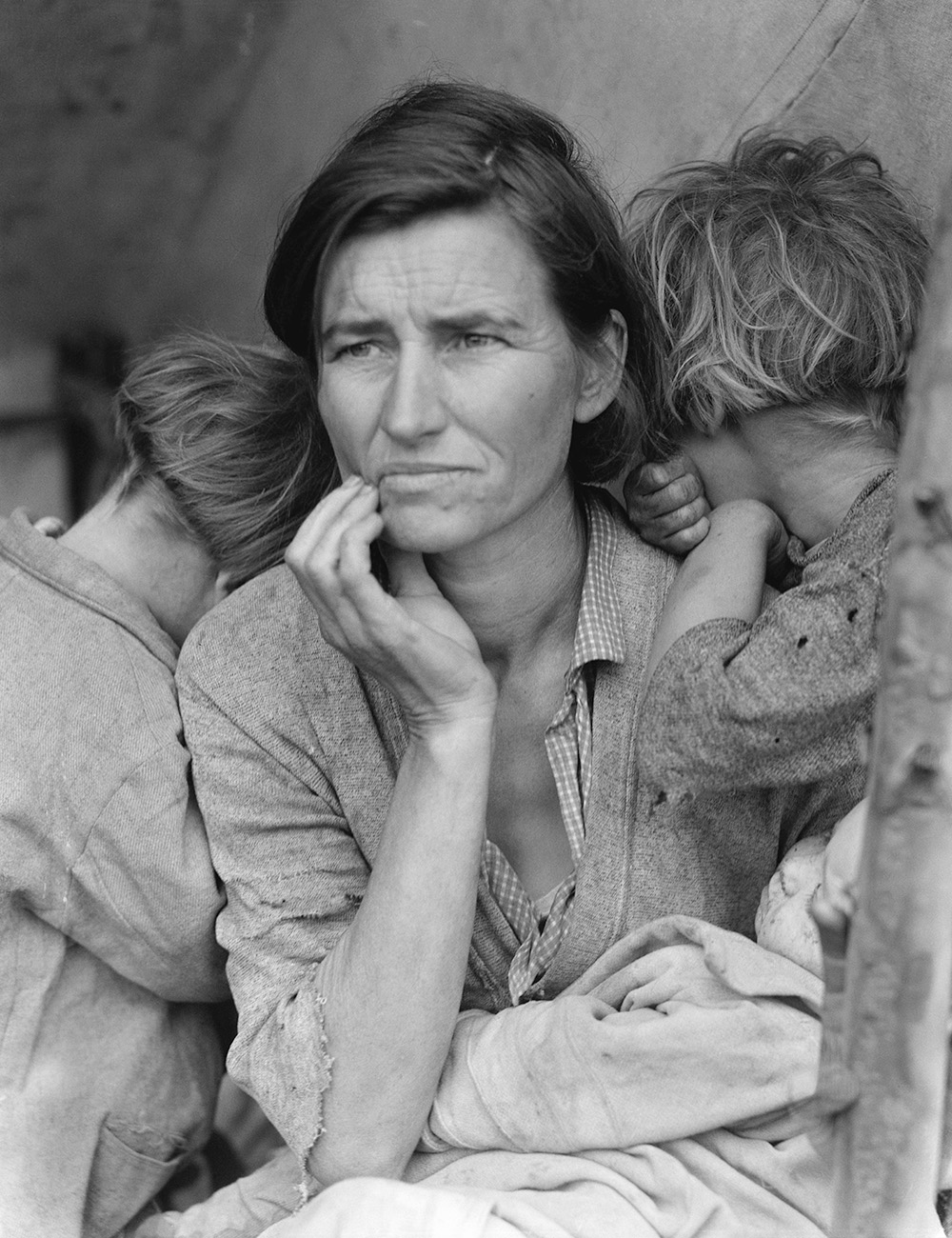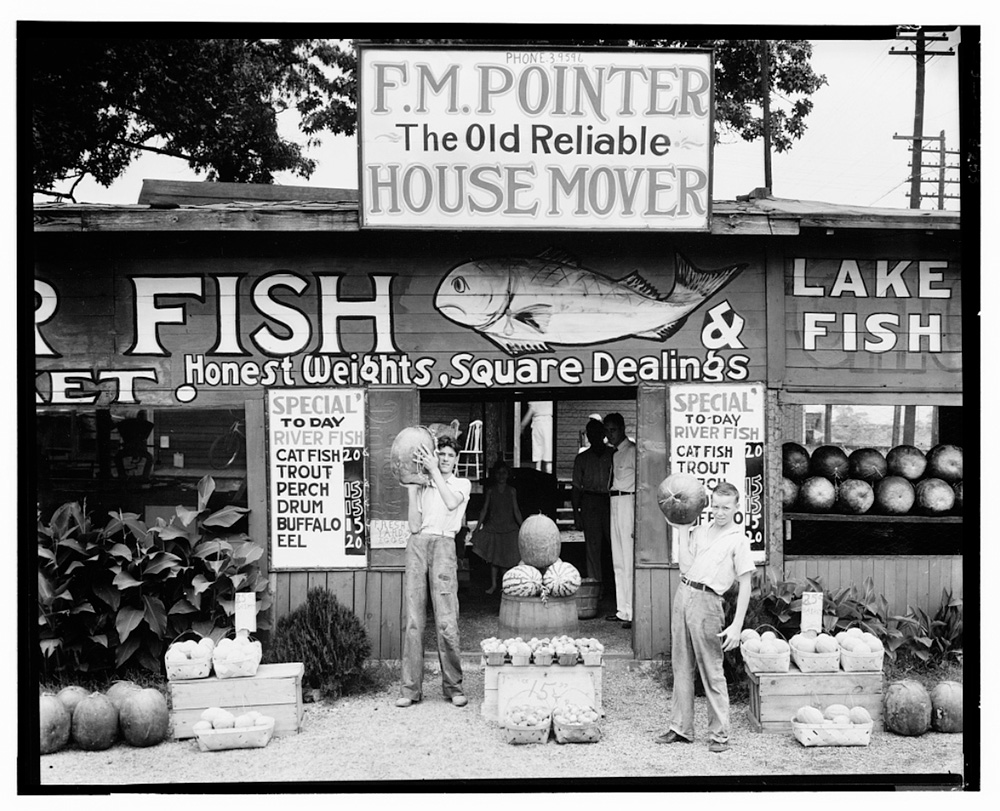Foreword by Anna Deavere Smith
Faces of America: Getting By in Our Economy
< BACK TO TABLE OF CONTENTS
Dorothea Lange’s “Migrant Mother,” Gordon Parks’s “American Gothic,” and Walker Evans’s “Roadside Stand near Birmingham, Alabama” are photographs that not only chronicled American life—they helped define it. Commissioned by the Farm Security Administration (FSA) to capture America during the Depression years, these images of the 1930s and 1940s are now as much a part of our national identity as speeches, historical accounts, and holidays. Many of the photographs looked race and class disparity in the face. Some were critiques. They remain relevant to contemporary disparities. Sometimes the stories they capture are harsh, but you can’t look away from them. They hang in museums all over the world. They auction for high sums.
The American Academy of Arts and Sciences’ decision to use pictures and documented words to animate the findings of its Commission on Reimagining Our Economy was an inspired one. Data is a necessary component of credibility and the food for lunchtime conversations in think tanks—but how often does it reach beyond the inner circle of those “in the know”? It is my hope that Faces of America: Getting By in Our Economy, though intended for a curated audience, will make its way to churches, YMCAs, locker rooms of high school football teams, colleges, and onto the pages of middle school essays.
The images are intriguing, often beautiful. Even though the sentiments evoked by the images and words throughout the book are not America the beautiful for spacious skies, viewers will find themselves engaged page after page. Beauty makes us sit up and take notice. The photographs, along with quotations from their subjects and excerpts from the Commission’s conversations with Americans at listening sessions across the country, tell the stories of those who are trying to “make it in America,” often without the supports they need: sufficient education, health care, a good night’s sleep.
It shouldn’t be so hard to make it. And that’s why we need imagination in addition to the evidence that data provides.
Even when you do think you’re doing right, you go get a job, and you’re trying to take care of your bills and everything. And then it’s always something that jumps in the way. . . . It’s just hard. I just feel like they don’t give you a chance out here.
Who or what is “they”? The government? The people who “run” things? Those who dominate in the marketplace? Those in the know? In 1975, economist Arthur Okun wrote, “the market has a place, and the market needs to be kept in its place.” Researchers usefully posit that the health of the American political economy requires three strong elements: markets, government, and a civil society. They say that the current outsized market has made this arrangement lopsided, and it threatens to be untenable for many.
I can work, struggle and do what I got to do every day, and as soon as I’ve done a whole lot and I get a little comfortable, there comes something else, boom, knock me right down.
Individuals do not feel secure or safe. They imagine that others do:
I mean, when we look at the wealthiest in American society, it’s not that they have some intrinsic component to who they are that allows them to succeed. It’s the fact that they can fail and still continue to survive and try other initiatives.
And what does working like a dog do to a civil society? Is it conducive to participation in democracy? One man works sixteen hours a day in a bakery. What time would he have to answer the call of a political organizer, for example? When could he volunteer to coach a soccer team, to create belongingness for himself and others? Does he have time to vote? To register to vote? Another in a listening session said:
I work hard. . . . My family life important for me. I sleep only four hour. That is important. I have no community life.
The simplicity of needs as they are chronicled here is remarkable. There’s a photograph of a man sitting at the bottom of a stairway in his Houston apartment complex with his no-doubt trustworthy companion, a stocky dog. He has no sidewalks.
Although I moved out of [Houston’s] Third Ward from that apartment that was like an asphalt jungle, and now I live in a place that has more greenery and I can walk my dog, there’s no neighborhood surrounding. So I can go walk around the parking lot, but I can’t walk around my neighborhood. There are no sidewalks around the outside of my complex. And my friends who can afford to buy houses and live in neighborhoods—of course they have all that.
He just needs . . . a neighborhood.
One photograph stands out because unlike the others, it includes no faces (see page 96). It’s a large indoor space—big windows, perfect light, a few buckets and some stools. At first, I thought it was an artist’s studio. It’s big enough for several artists. It was once a rubber factory, then a pajama factory in Pennsylvania; it is now the unfinished floor of what will be a “mixed-use space.” Wouldn’t it be wonderful if the mix were of different representatives of the community across race and class, reimagining our economy? Faces of America: Getting By in Our Economy was inspired by remnants of the past, the FSA photographs made by the likes of Parks, Lange, and Evans. It makes me think that the task of reimagining our economy is like a big room, once a factory, now a place to be creative. The very use of the word reimagine is inviting. It’s welcoming. It’s hospitable. The empty space with remnants of the past is hopeful.
Anna Deavere Smith is a writer and actress. She is credited with having created a new form of theater. Her plays, sometimes called “docudramas,” focus on contemporary issues from multiple points of view and are composed from excerpts of hundreds of interviews. Her plays, and films based on them, include Fires in the Mirror and Twilight: Los Angeles, both of which deal with volatile race events in the 1990s; Let Me Down Easy, about the U.S. health care system; and Notes from the Field, which focuses on the school-to-prison pipeline. Her work as an actress on television includes Inventing Anna, The West Wing, Nurse Jackie, and Black-ish; and in mainstream movies includes Philadelphia, The American President, and Rachel Getting Married. She is a University Professor at New York University’s Tisch School of the Arts. She was elected a Fellow of the American Academy in 2019. In 2023, President Biden appointed her to the President’s Committee on the Arts and the Humanities.


